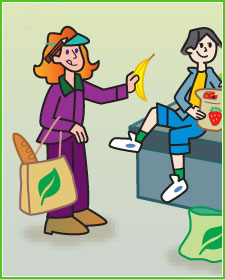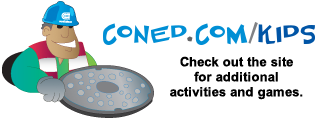|
|
Sponsored Content



REDUCING WASTE
Exploring Ways to Help the Environment Grades 6-8
Exploring Ways to Help the Environment Grades 6-8
Overview
In this activity, students will explore efforts people are making to conserve energy, be more energy efficient, reduce waste, and reduce their impact on the environment.
Objectives
- Explore ways of living green
- Challenge students to conduct research on energy conservation and waste reduction
Skills Supporting New York State P–12 Common Core Learning Standards for English Language Arts and Literacy*
- Participate in group discussions
- Cite textual evidence to support analysis
- Conduct short research projects
- Gather relevant information from multiple sources
- Write arguments to support claims
- Write informative/explanatory texts to examine and convey complex ideas and information clearly and accurately
- Use technology, including the Internet, to produce and publish writing
Materials Needed: Copies of the “Reducing Waste” activity sheet for students
Time: 30 minutes, plus research time
Getting Started
To begin this activity, engage students in a discussion about energy consumption and trash generation to get them thinking about their own habits, as well as how these issues impact the nation and the world. Ask students:
- How do you use energy on a daily basis? (Answers may include for lighting, using appliances and electronics, heating, air-conditioning, cooking, and heating water. Encourage students to also consider energy needed to create items they use each day.)
- What kinds of things do you throw in the trash daily?
- What items can be recycled or composted?
- How do energy consumption and trash impact the environment?
- What can you do to reduce the amount of energy you use or trash you produce?
Using the Student Activity Sheet
- Distribute the student activity sheet.
- Review the sheet with students and discuss Lauren Singer’s zero-waste goal. Ask students:
- What do you think it takes to accomplish this type of goal? (Answers may include planning ahead, strategizing, determination, etc.)
- What challenges do you think Lauren faces in striving to live waste-free?
- Do you think you could take on this kind of challenge or lifestyle?
- What steps can you take to reduce your waste or strive for a waste-free life?
- For the second part of the activity, students will research other individuals or groups striving to reduce their impact on the environment. Students might also explore sustainable buildings that are being developed. Discuss potential options as a class.
- Provide students with guidelines for their research, such as presentation format, length, deadline, etc. Students might work individually or in teams on the research project.
- Invite students to present their research to the class. As a group, discuss the presentations using the questions from the worksheet:
- What is the individual or group doing to help the environment?
- What is their goal?
- What have they done successfully?
- What challenges have they faced?
- What can others learn from this person’s or group’s efforts? What can they apply to their own lives?
For more information on Lauren Singer, visit:

